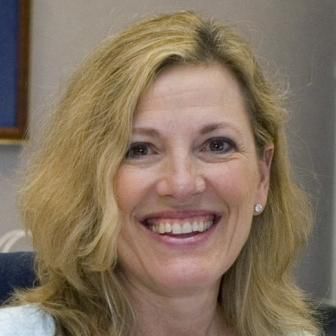Treating Financial Well-being as a Public Health Issue: Lessons from Delaware
Written by Rita Landgraf, Delaware Department of Health and Social ServicesAcross the country, the following scenario is all too familiar for low- and moderate-income working families.
Mom is a cashier at a local grocery store. It’s a good job and she likes the work, but her car is unreliable and she has been late several times during the last few months. She doesn’t have enough money in savings for car repairs and she cannot take the bus because she needs to drop off the baby at day care on her way to work. Her supervisor has warned her that if she’s late one more time, she’ll be fired. If she loses this job, she doesn’t know how she’ll cover rent and her other living expenses. She’s on medication to manage her chronic high blood pressure, and she isn’t sleeping well because she’s worried about the car, her job, her family, and what might be next. Sometimes, turning the ignition key each morning is almost too much stress to bear.
Financial stress can have a destabilizing effect on health. As such, poverty remains the clearest “upstream” or “social determinant” of health (for more information, see Jason Purnell’s essay in this book). To help explain the concept of social determinants, public health officials often use the analogy of fish dying in a river. While it’s possible at first to manage the dead fish, eventually as more begin to die, it’s better to go upstream and find the root cause of why the fish are dying. Those root causes represent the social determinants of health. Similarly, if we want to improve health outcomes for lower-income people, whose health is typically much worse than higher-income individuals, we need to move “upstream” to address the social and economic factors that influence health, such as education, employment, and financial stability.
According to the Gallup-Healthways Well-Being index, Americans living in poverty are more likely than higher-income Americans to have a variety of chronic health conditions, both psychological and physical. The biggest disparity was in rates of depression. Adults below the poverty line were almost twice as likely to have been diagnosed with depression at some point in their lives than were those with higher incomes (nearly 30 percent vs. 15.8 percent). Similarly, individuals in poverty had higher rates of obesity, asthma, diabetes, high blood pressure, and heart attacks. As Michael Reisch, a professor of social justice at the University of Maryland, put it in his 2013 testimony before a Senate panel, “Poverty is a thief. Poverty not only diminishes a person’s life chances, it steals years from one’s life.”1 To be clear, it isn’t just having more money that extends life. Rather, financial well-being addresses many of the root causes of poor health, including creating a sense of control over one’s circumstances and future. Financial empowerment builds our economic security, improves our quality of life, promotes health and well-being, and fosters self-sufficiency.
This connection between financial health and physical health was further cemented for me soon after I became Cabinet Secretary for the Delaware Department of Health and Social Services (DHSS) in 2009. I asked my leadership what the department was doing to foster self-sufficiency. Their answer was both simple and eye-opening: We provide benefits, which can supplement in a crisis, but we do not provide financial sustainability or security. From that stunning admission came the realization that we needed to do more to truly empower people and set them on the path to self-sufficiency. To further physical, emotional, and financial well-being, we must empower individuals to take control of their personal finances.
With the support of Governor Jack Markell, a former Treasurer for the State of Delaware, our team developed a statewide financial empowerment strategy in 2011, which includes:
- One-on-one financial coaching;
- Alternative financial products to counteract predatory payday loans, pawn brokers, title lenders, rent-to-own stores, and other businesses that profit from a need for quick cash;
- College-bound programs that help students and families navigate the financial roadmap of postsecondary education, including accessing financial aid and managing student loan debt;
- Referrals and collaborative initiatives among nonprofit service providers to support debt consolidation, homeownership and foreclosure counseling, and self-employment; and
- Free, self-help tax preparation online.
Data on Delaware’s household financial demographics speak to the need for this intentional focus on financial empowerment. According to the U.S. Census, of the 335,707 households in Delaware in 2013, 42 percent had incomes below $50,000, and 29 percent had incomes below $35,000. Many of these households have traditionally struggled with:
- Monthly expenses that exceed income;
- No savings or safety net;
- Supplementing income with credit;
- Low credit scores;
- High debt for medical expenses, student loans, and credit cards;
- Exploitation by the “fringe” financial sector;
- Lack of access to mainstream financial services and products; and
- Debilitating stress and worry over family finances.
With those statistics in mind, DHSS addressed financial well-being as part of our overall mission: To improve the quality of life for Delaware’s citizens by promoting health and well-being; to foster self-sufficiency; and to protect vulnerable populations. To me, they are all intertwined. Self-sufficiency is intrinsic to health and well-being, and without it, a person is more likely to be vulnerable, which can lead to poor health outcomes and a poor quality of life.
Delaware currently is the only state to have a statewide financial empowerment strategy led by the governor. The program, called $tand By Me ($BM), is headquartered in my department and is a partnership with the United Way of Delaware (UWD). $BM is funded primarily through contributions from local and national foundations, financial institutions, and UWD, with additional state funding to cover five staff positions. $BM’s core service is personal financial coaching. This enables each customer to develop a one-on-one relationship with a financial coach, which reduces the fear of dealing with difficult financial issues and encourages personal financial capability (see Michael Collins’ essay in this volume for more on financial coaching).
$BM’s financial coaching model never dictates, but rather asks each customer to identify his or her own challenges and goals, and come up with a customer-driven action plan. This approach removes barriers of income, race, age, gender, and disability as the customer is empowered to take the lead in developing his or her personalized vision and strategy to achieve financial stability. Because the program is available to all Delawareans, it eliminates the stigma often associated with poverty and encourages individuals to reach out for the support they need.
One of the unique aspects of $BM is that it is designed to be co-located and embedded within organizations that serve the target market, but that do so with very different missions. For example, $BM is offered as an employee benefit in partnership with employers of low-wage workers; as a student resource in community colleges serving nontraditional students; as a service for students and their parents to support college access in partnership with high schools and the Delaware Department of Education; as a service to employees and families in child care in partnership with the Delaware Office of Early Learning and the Department of Services for Children, Youth and Their Families; and as a resource in economically disadvantaged communities in partnership with nonprofit organizations. For example, $BM is embedded within Head Start as both a community service to parents and as an employee benefit to staff. Parents are asked to identify a financial goal as they enroll their children and work with a financial coach who is located onsite at Head Start. This win-win partnership not only enables $BM to reach economically vulnerable families, but it also enables Head Start to respond to federal performance standards to increase the financial stability of the families it serves.
These partnerships mark the beginning of a large-scale change in which financial empowerment becomes a priority for a diverse group of stakeholders representing multiple sectors. $BM customers are working on a variety of financial goals, with many pursuing multiple goals. As of March 2015, 4,272 had attended workshops on financial aid and postsecondary education; 2,385 had created a budget and a plan to improve their daily money management; 1,423 reduced their debt and increased their credit score; 961 were working to obtain consumer-friendly financial services; 743 were working to establish regular monthly savings; and 658 were pursuing improved employment situations.
What started as a philanthropic program now has greater policy implications as a stabilizing force for individuals and families at workplaces, educational institutions, and government agencies. To build security for the future of $BM beyond the current state administration, legislation was passed in 2015 in Delaware’s General Assembly to codify the Office of Financial Empowerment within the Department of Health and Social Services. With the passage of this bill, financial empowerment will evolve as a priority for the state of Delaware, from one administration to the next. The office will continue to be led by a director and four staff, supported within the DHSS budget. This team will maintain $BM’s public-private partnership with philanthropy and the nonprofit sector to sustain the momentum in support of economic security in Delaware.
Today, $tand By Me provides customized services to people with disabilities, older adults, veterans, people of color, staff and families at child care centers, young people aging out of foster care, dislocated workers, public housing residents, and low-wage workers across a broad spectrum of industries. For these traditionally underserved populations, $BM represents an opportunity to improve economic self-sufficiency and financial well-being — critical upstream factors that contribute to better downstream health. Healthy individuals and healthy families — physically, emotionally, and financially — will lead us to healthier communities. That’s the ultimate win for everyone.
NOTES
- Michael Reisch, “Dying Young: Why Your Social and Economic Status May Be a Death Sentence in America.” Testimony before the Subcommittee on Primary Health and Aging, Committee on Health, Education, Labor and Pensions, U.S. Senate, November 20, 2013.




